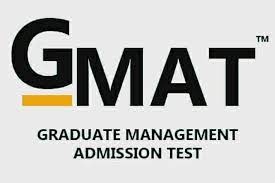What is the GMAT®Test?
A standardized test, the GMAT®Test measures the Verbal, Mathematical and Analytical skills.
The Graduate Management Admissions Test (GMAT) Is a standardized test that primarily intends to aid graduate schools of business assess the potential of the applicants for advanced study in business and management. Nearly 900 management institutes all over the world require GMAT® scores from the applicants.
The GMAT® is different from most other customary examinations. The examination is entirely computer-based, and no two students get identical sets of questions. Also, students cannot skip questions. The test is scored on a maximum of 800. The GMAT® Score alone cannot guarantee admission into a school. The test is only one of the major factors taken into consideration in the long process of an applicant getting admitted into a Business School he/she desires.
The GMAT is owned by the Graduate Management Admission Council (GMAC). Admissions committees at graduate business schools use the scores along with undergraduate records, work experience, recommendations and other relevant criteria in evaluating candidates for admission to MBA and other business-related courses. For some courses GMAT is a prerequisite; for others it may be recommended or not required. Always check the requirements of individual institutions before applying.
The GMAT is currently a computer-based test offered at centers in the US and in many other countries. Since 2006, the GMAC has given the test question and software development to ACT Inc, and has given Pearson Vue the responsibility for delivery of the test at test centers. The latest version of the test, introduced in June 2012, includes an integrated reasoning section.
GMAT® Test Structure
The GMAT has four main divisions: Analytical Writing; Integrated Reasoning; Verbal Reasoning; Quantitative reasoning.
Analytical Writing
The Analytical Writing section has one essay writing task: the Argument. The Argument task presents a statement of a position. The candidate is required to analyze the logic of the given position and suggest how and where the reasoning may be faulty or require improvement. The student is given 30 minutes for this essay.
The scoring for the Analytical Writing section is on a scale of 0-6. The essay is scored by a human reader and then by a computer program (which the official GMAT website, www.mba.com , refers to as an automated essay-scoring engine). If the human and computer scores differ significantly, the score is sent to a second expert reader for final evaluation.
Integrated Reasoning
The Integrated Reasoning section has 12 questions to be solved in 30 minutes. The score is reported on a scale of 1-8 (intervals of 1).
The questions involve interpretation of tabular, graphical and written information from a variety of sources. Each question is independent and may have more than one part, but one prompt may be used for more than one question. An on-screen calculator is available.
Quantitative Section
The Quantitative section has two types of multiple choice questions: data sufficiency and problem solving. Follow the links to explore these types of math question.
There are 37 questions to be solved in 75 minutes. The level of math knowledge should be within the grasp of an 11th Grade student. However, the level of reasoning required is quite high. No calculators are allowed.
Verbal Reasoning
The Verbal Reasoning section contains three types of question: critical reasoning; reading comprehension; sentence correction. All questions are multiple-choice. You can click on the links to try out questions of each type.
There are 41 questions to be completed in 75 minutes.
What is a good GMAT score?
- The average score for GMAT test takers over the last few years is somewhere in the high 500’s
- A ‘good’ score would be over 600
- A ‘very good’ score is one which crosses the 700 mark
As a rough guide, a score of 600 indicates a percentile ranking of about 70; a score of 700 approximates to the 90 percentile. (The percentile rank indicates the percentage of people taking the test who performed worse than you.) The average (mean and/or median) scores for students admitted to the 50 top ranking MBA programs is apparently 660. These are ball-park figures: it is easy enough to find the average GMAT scores for the intake in a given year to individual business schools.
Note that as well as an overall score and a percentile, the test report includes the scores and percentiles for both the verbal and quantitative sections of the test. Sometimes a student’s composite score looks very good, but shows a great disparity between the verbal and quant sections – this is unlikely to go down well with the admissions committees.
One thing is certain: the scores of those admitted to B-schools have been rising in recent years. Some people with lower scores than the average for any given school are admitted because they have other assets that add to the diversity of the school. In effect, this means that for a person with nothing outstanding to offer in terms of academic prowess or work experience, the score he or she needs to stand out from the crowd of applicants at a top ten B-school has to be 720 or more.
IMPORTANT NOTICEEach GMAT candidate in Nigeria is required to present a valid international passport as an identifying document at the test center on the test day before he/she will be allowed into the test room.
|

